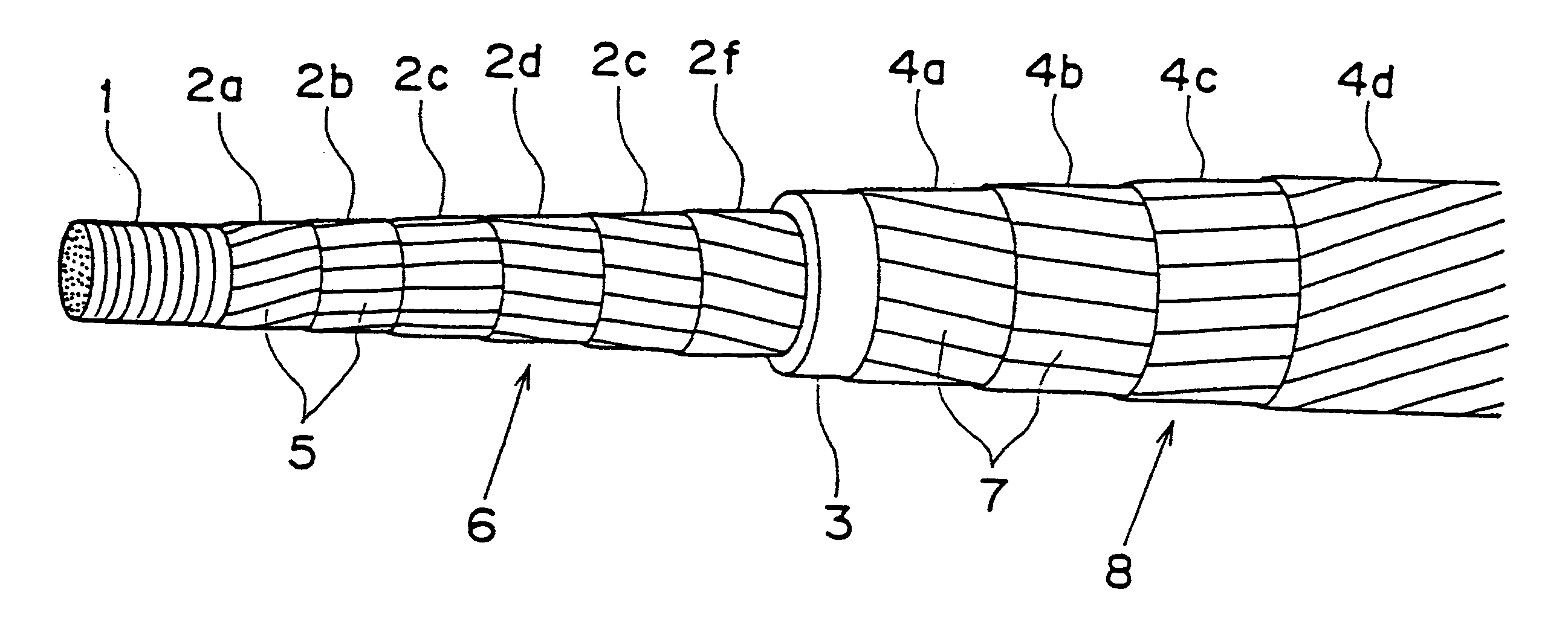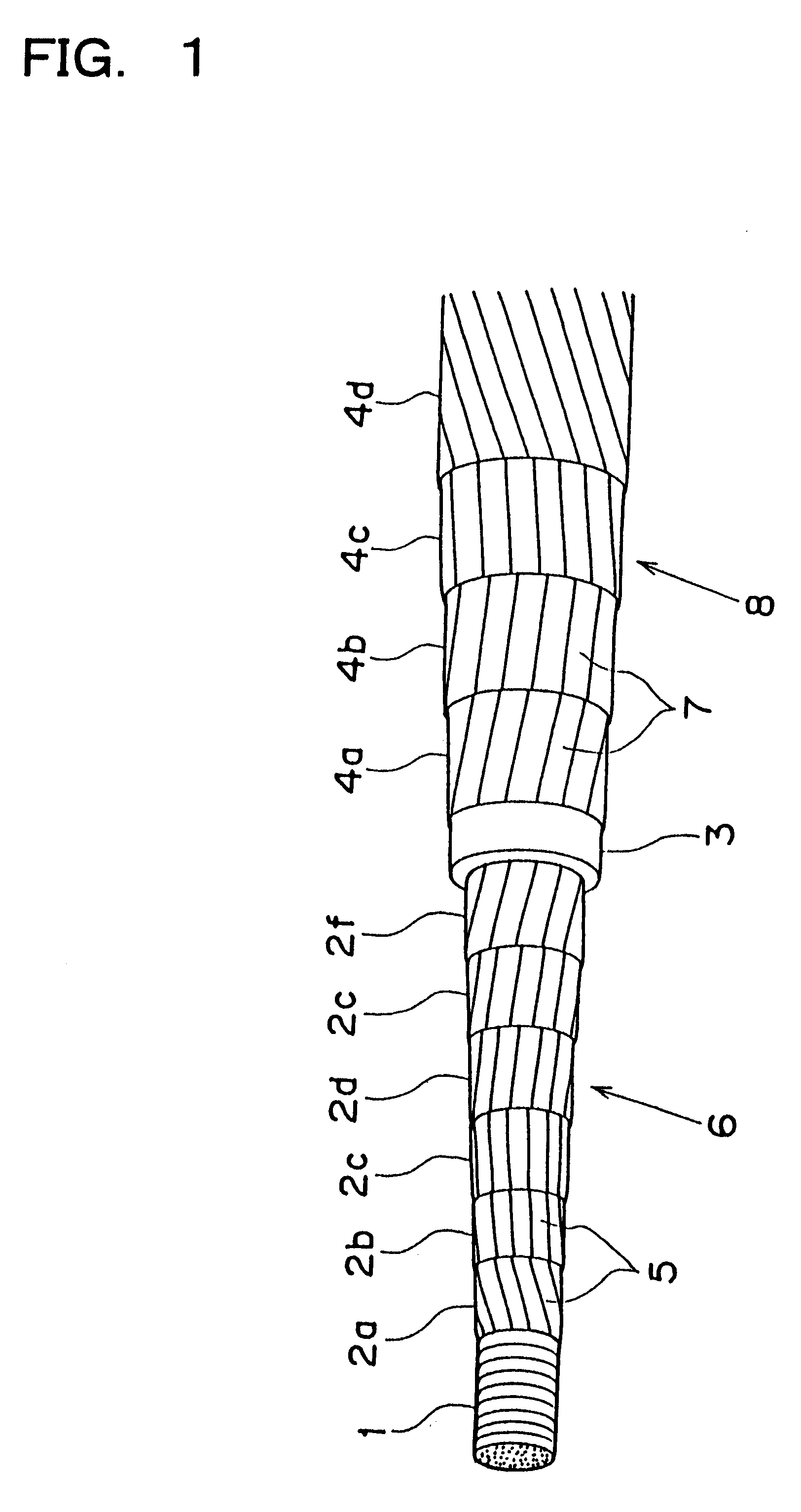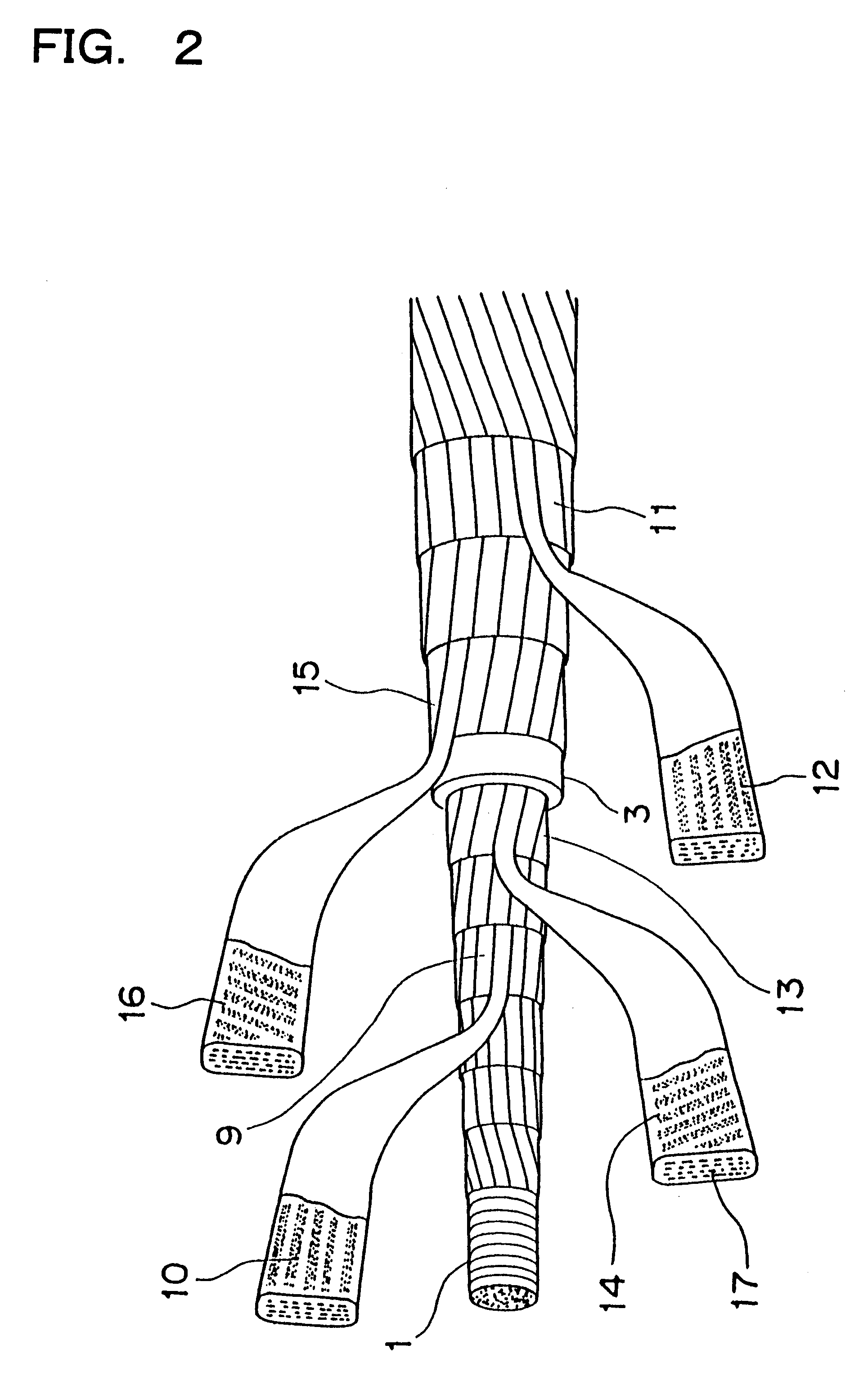Superconducting cable for alternating current
a superconducting cable and alternating current technology, applied in the superconducting field, can solve the problems of deteriorating the critical current characteristic of the superconducting wire, increasing the loss of alternating current, and disturbance of winding
- Summary
- Abstract
- Description
- Claims
- Application Information
AI Technical Summary
Benefits of technology
Problems solved by technology
Method used
Image
Examples
example 1
FIG. 1 shows a schematic side view for explaining a multi-layer superconducting cable in this example. A center member 1 is 18 mm in outer diameter and shaped into a flexible hollow pipe made of copper. On and around the center member 1, tape-shaped superconducting wires 5, which is 3 mm in width and 0.2 mm in thickness, were wound in spiral form to provide six layers from a layer 2a to a layer 2f, thereby forming conductor layers 6. On and around the conductor layers (superconducting layer) 6, a polypropylene laminated paper tape, which is 30 mm in width and 0.1 mm in thickness) was wound in a spiral form to have a plurality of layers laminated one after another. The tapes were laminated up to a thickness of 6 mm, thus forming an electrically insulating layer 3. On and around the electrically insulating layer 3, a tape-shaped superconducting wire 7 of which width is 3 mm (the same in width as the conductor layers) and of which thickness is 0.2 mm was wound in spiral form to form fo...
example 2
FIG. 2 shows another superconducting cable for alternating current according to the present invention. In the similar manners to those in Example 1, the conductor layers, insulating layers, and shielding layers were formed. In fabricating this superconducting cable, an intermediate conductor layer (the (N / 2+1)-th layer) 9 is wound using a tape-shaped superconducting wire 10 with untwisted filaments. In addition, an intermediate shielding layer (the (n / 2+1)-th layer) 11 is wound using a tape-shaped superconducting wire 13 with untwisted filaments. The outermost conductor layer (the N-th layer) 13 is formed using a tape-shaped superconducting wire 14 with twisted filaments 17. Furthermore, the innermost shielding layer (the first layer) 15 is formed using a tape-shaped superconducting wire 16 with twisted filaments.
Alternating current of 3000 A was supplied through the conductors. As a result, it is found that the alternating current loss further reduces by 1 / 2, compared to a cable in...
example 3
As an example 3, there will be explained a cable having conductor layers and shielding layers, in which the number of conductor layers and the number of shielding layers are odd, respectively. In the similar manners to those in Example 1, a center member is 18 mm in outer diameter and shaped into a flexible hollow pipe made of copper. On and around the center member, tape-shaped superconducting wires were wound in spiral form to provide seven layers, thereby forming conductor layers. On and around the conductor layers (superconducting layer), a polypropylene laminated paper tapes were wound in a spiral form to have a plurality of layers laminated one after another. The tapes were laminated up to a thickness of 6 mm, thus forming an electrically insulating layer. On and around the electrically insulating layer, like the conductor layers, a tape-shaped superconducting wires were wound in spiral form to form five layers, thereby providing shielding layers. The winding directions and wi...
PUM
| Property | Measurement | Unit |
|---|---|---|
| bend radius | aaaaa | aaaaa |
| length | aaaaa | aaaaa |
| length | aaaaa | aaaaa |
Abstract
Description
Claims
Application Information
 Login to View More
Login to View More - R&D
- Intellectual Property
- Life Sciences
- Materials
- Tech Scout
- Unparalleled Data Quality
- Higher Quality Content
- 60% Fewer Hallucinations
Browse by: Latest US Patents, China's latest patents, Technical Efficacy Thesaurus, Application Domain, Technology Topic, Popular Technical Reports.
© 2025 PatSnap. All rights reserved.Legal|Privacy policy|Modern Slavery Act Transparency Statement|Sitemap|About US| Contact US: help@patsnap.com



